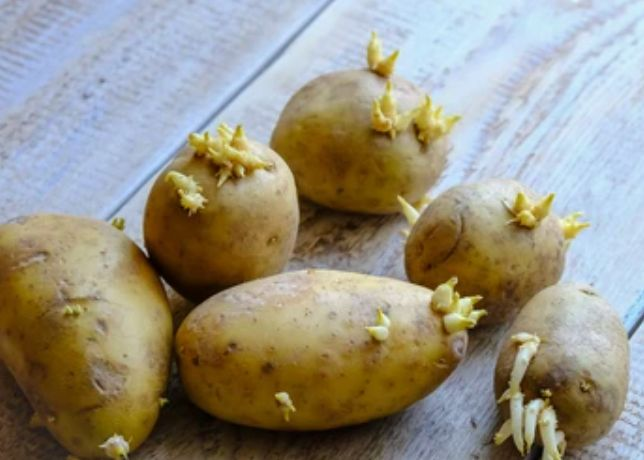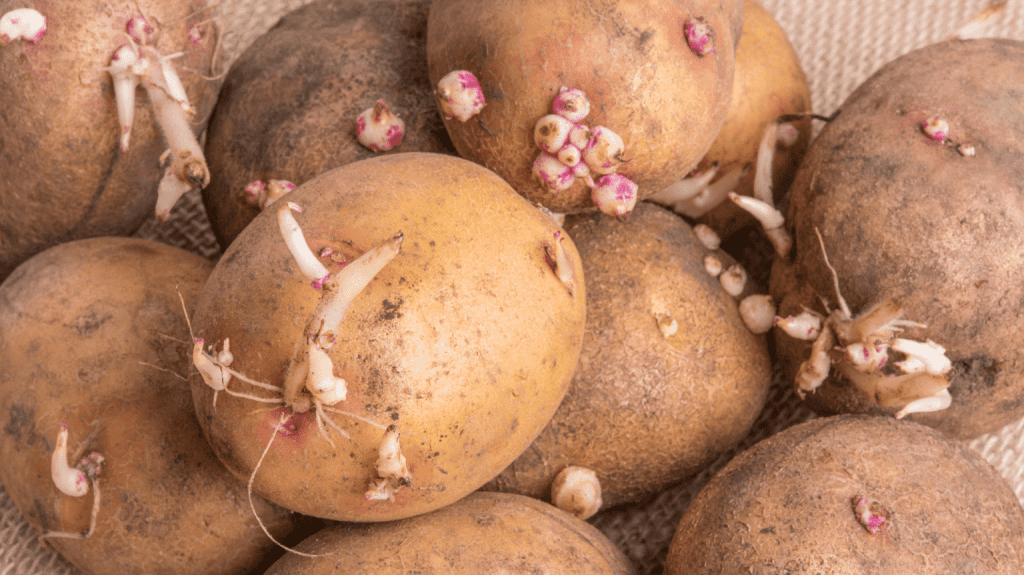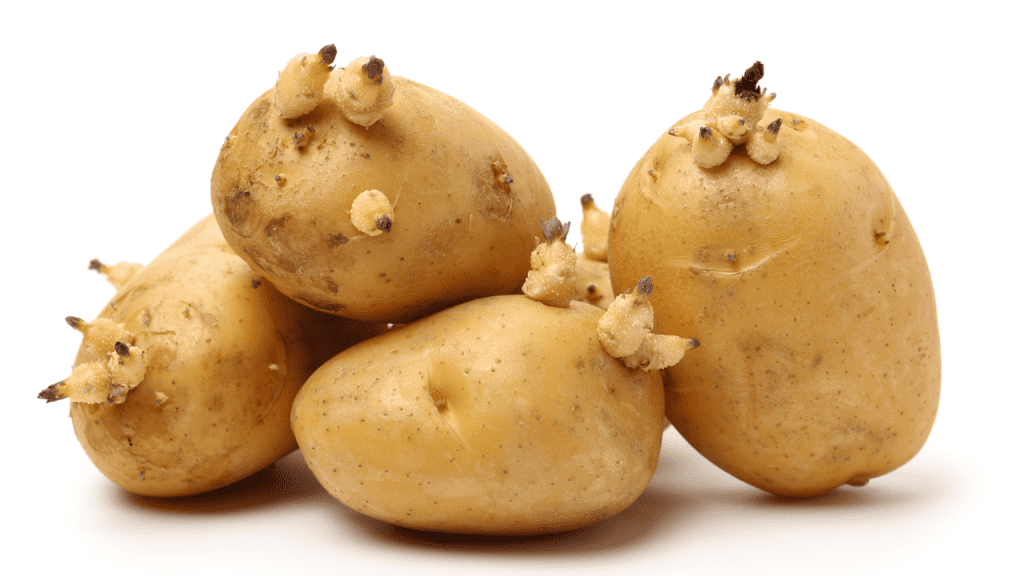Potatoes are a kitchen staple in households worldwide, loved for their versatility. Whether mashed, roasted, or fried, potatoes feature in countless recipes. However, when stored for too long, potatoes can sprout, leaving many wondering: Are sprouted potatoes safe to eat? In this comprehensive guide, we’ll explore the safety, risks, and best practices for handling sprouted potatoes, ensuring your meals are safe and delicious.

What Causes Potatoes to Sprout?
Potatoes are living root vegetables, and like most plants, they contain dormant buds or “eyes” that can sprout under the right conditions. The sprouting process is triggered by a combination of factors such as light, moisture, and temperature. When exposed to warmth and humidity, the eyes on the potato can develop into sprouts.
Sprouts are simply the beginnings of new potato plants, growing in search of light and nutrients. While the sight of sprouting potatoes can be alarming, the key concern is whether these sprouts affect the potato’s safety and edibility.
Are Sprouted Potatoes Safe to Eat?
The short answer is yes—sprouted potatoes are generally safe to eat, but with a few precautions. Sprouts themselves are not ideal to consume due to potential toxicity, but the potato flesh can often still be salvaged. Let’s look at the considerations in more detail:
1. The Importance of Removing Sprouts and Eyes
When potatoes begin to sprout, they produce higher concentrations of a natural toxin called solanine. Solanine is a glycoalkaloid found in the nightshade family, to which potatoes belong. This toxin can cause mild symptoms such as nausea, stomach cramps, or vomiting if consumed in large amounts.
The good news? Solanine is primarily concentrated in the sprouts, eyes, and any green patches on the potato skin. Simply removing the sprouts and eyes with a knife or peeler can greatly reduce any potential risk. Be thorough—cut out any areas where the potato has sprouted to ensure you eliminate as much solanine as possible.
2. Beware of Greening
In addition to sprouting, potatoes that have been exposed to too much light will often develop green patches on their skin. This greening is another sign that solanine levels are on the rise.
If you see green on your potatoes, cut away the affected areas before cooking. These green spots are not safe to eat, but the rest of the potato is usually fine after trimming. Just be sure to dispose of the green parts to avoid any unwanted side effects.
3. Cooking Sprouted Potatoes
Cooking plays an important role in reducing solanine levels in potatoes. Heat helps break down the toxin, making the potato safer to eat. Whether boiling, roasting, or frying your sprouted potatoes, make sure they are cooked thoroughly.
While cooking won’t completely eliminate solanine, it significantly reduces the concentration, making the potatoes much safer to consume.

Health Risks of Eating Sprouted Potatoes
Now that we know how to handle sprouted potatoes, let’s address the potential health risks associated with eating them.
1. Solanine Poisoning
Solanine poisoning is rare, but it can happen if you consume large amounts of sprouted or green potatoes. Symptoms include nausea, vomiting, diarrhea, and stomach pain. In more severe cases, it can cause dizziness, headaches, and even neurological symptoms.
Fortunately, following the basic steps of removing sprouts, trimming green areas, and cooking thoroughly reduces the risk of solanine poisoning significantly. However, if the potato has turned completely green or is heavily sprouted, it may be best to discard it.
2. Children and Pets
It’s important to note that children and pets are more sensitive to solanine than adults. If you’re preparing food for young kids or have pets that might sneak food from the kitchen, be extra cautious when dealing with sprouted or green potatoes.
How to Handle and Store Potatoes to Prevent Sprouting
To minimize sprouting and keep your potatoes fresh, it’s essential to store them properly. Here are some tips for maintaining potato freshness:

1. Proper Storage Conditions
Store potatoes in a cool, dark place like a pantry, basement, or cupboard. Avoid areas that receive too much light, as light exposure accelerates the sprouting process and promotes greening. The ideal storage temperature for potatoes is around 45°F to 55°F (7°C to 13°C).
2. Don’t Refrigerate Potatoes
While refrigeration might seem like a good option, storing potatoes in the fridge causes the starch in the potatoes to convert into sugar, which can result in an unpleasantly sweet flavor when cooked. Instead, store them in a ventilated bag or box at room temperature.
3. Keep Moisture Low
Humidity also plays a role in sprouting. Ensure your potatoes are stored in a dry environment. Excess moisture can lead to mold or sprouting. If you buy potatoes in bulk, consider placing them in a mesh bag to allow for air circulation.
Should You Eat Sprouted Potatoes? Final Thoughts
So, is it safe to eat sprouted potatoes? The answer is yes, but with a few precautions. Here’s what you should remember:
- Remove sprouts, eyes, and green patches before cooking to reduce solanine levels.
- Cook thoroughly to break down any remaining toxins.
- Discard heavily sprouted or green potatoes if they seem too far gone.
While sprouted potatoes might not taste as fresh as newly harvested ones, they are perfectly fine to eat when handled properly. This not only helps reduce food waste but also saves you money by getting the most out of your pantry staples.
Conclusion
Sprouted potatoes don’t need to end up in the trash—as long as you take the necessary steps to remove sprouts, eyes, and green spots, and cook them properly. By being cautious and understanding how solanine affects your potatoes, you can safely enjoy them without worrying about food safety.
Next time you find sprouted potatoes in your kitchen, don’t panic—just give them a little trim, cook them up, and enjoy!


